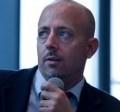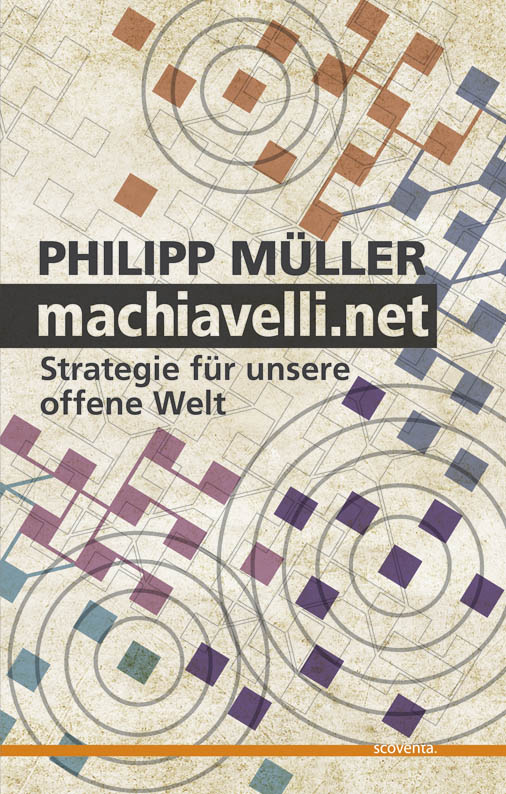Teaching Learning [to] Organizations in Turbulent Times
I just spent two wonderful days with the Dutch interior ministry at their Trends in Troubleshooting conference. The very original core question posed to us be the conference organizers around Jorrit de Jong from HKS was, how do we think strategically about the feedback we get from citizens and what can we learn from them? I had been asked to lead a workshop on organizational learning and had the honor to be reflector on the final panel of the day, a round-table, where we tried to wrap our mind around the question, how to translate learning into corporate/governmental strategy.
I am the father of three little kids, and they never stop to amaze me. They learn really fast and enjoy it. Johanna who will turn two months on Saturday has just learned to smile, when I smile at her, Max, who is in a Latin American kindergarten, now corrects my Spanish at the dinner table, and Helena who just started first grade and is surprising me with new perspectives on how she sees herself. The trajectory from Johanna to Helena is breathtaking, and there is more to come. Most people I know, love to learn. Most organizations seem to hate it. Why?
A learning organization is an institution that facilitates the learning of its members, continuously reflects and transforms itself, and thereby creates an institution that becomes greater than its parts. According to Peter Senge, a learning organization has five main features; systems thinking, personal mastery, mental models, shared vision and team learning.
Systems thinking is the process of understanding how things influence one another within a whole, personal mastery refers to individuals willing to continuously improve, mental models are the assumptions that shape the thinking in organizations that are to be reflected, learned and unlearned, shared vision is the defined common goal, and team learning, the knowledge management structures, allowing creation, acquisition, dissemination, and implementation of this knowledge in the organization.
So we are confronted with a puzzle, that even though as humans we love learning, as organizations we seem to shun it.
Maybe the metaphorical mapping of learning (a psychological concept) onto organizations (a political/managerial concept) is problematic. However, even though the anthropomorphization of organizations that comes with the mapping is problematic – organizations are not humans, just as fast cars are not girl friends – from empirical experience, we know that organizations that achieve the ability to learn, to act as if they were human, over-perform. We could loosely map Johanna, Maximilian, and Helena on the stages that we expect a learning organization to go through:
First order learning: execute the leaders’ ideas. Command and control.
The original story on organizational learning can be found in the introduction to Sun Tzu’s text the art of war. Sun Tzu Wu was called to Ho Lu the king of the Ch’i state and asked if he could teach his strategic approach to the king’s concubines. After confirming this, he started to teach them to follow his marching orders.
After they do not follow his commands for the second time – stating if a command is clear and the troops do not follow, it must be the fault of the officers – he beheads the acting officers (the king’s favorite concubines). Thereafter, the troups follow his commands perfectly. Almost like Johanna now responds to my smiles. Not like Helena, who became a different person after she started school. Even today, after more than 2000 years since Sun Tzu, most organizations still resemble Johanna and and not Helena. They are good at adapting to the changes suggested by their generals.
Second order learning: collect data, develop hypotheses and test them. Feedback loops, hypothesis-driven, data-driven.
In 1994, Police Commissioner William Bratton of the New York Police Department created CompStat, a leadership and management strategy designed to reduce the city’s crime rate. It was based on accurate and timely intelligence, effective tactics, and relentless follow up on tasks.
“Collect, analyze, and map crime data and other essential police performance measures on a regular basis, and hold police managers accountable for their performance as measured by these data.”
First, they collect and analyze data to determine the type and level of results that the organization is producing, to detect its important “performance deficits,” and to suggest policies and practices that might produce improvements, an organizational learning strategy. In the words of performance leadership guru Bob Behn:
A jurisdiction or agency is employing a PerformanceStat performance strategy if it holds an ongoing series of regular, frequent, periodic, integrated meetings during which the chief executive and/or the principal members of the chief executive’s leadership team plus the individual director (and the top managers) of different sub-units use data to analyze the unit’s past performance, to follow-up on previous decisions and commitments to improve performance, to establish its next performance objectives, and to examine the effectiveness of its overall performance strategies.
Third order learning: reflect the role of the organization in its greater eco-system and adapt to it.
Third order learning is reflexive learning that adapts the structure of the organization to new needs in real time. In a world conceptualized as stable third order learning did not play a central role. Once processes were in place to deal with an issue they just needed to be executed well, something that Irwin Turbett from Warwick referred to as managing tame problems or in Michael Porter’s language, positioning. However, problems also come in other forms: crisis and wicked problems. Crisis are situations, were decisions need to be taken in real-time und imperfect information, so he suggests control as the way to deal with them. I am not fully convinced that he is correct in his analysis, because today we have decentralized crisis management tools such as Ushahidi or Twitter. Wicked problems on the other hand are issues that are not amenable to algorithmic solutions and they can change through time. Addressing them through a Porter positioning strategies or by aiming to optimize existing processes is actually dangerous. As we are moving into a world where transformation is becoming the default, flux as Heraclite would call it, we need to develop organizations that can deal with changing environments, i.e. wicked problems.
Learning Organizations in Turbulent Times
Today, the ability to adapt to a turbulent world is probably the single most important capability of successful organizations, think Netflix, which had to reinvent its revolutionary business model less than five years after it had developed it. Adaptive organizations embrace experimentation and constant reflection in order to keep pace with incessant change. They utilized managed evolution—in which activities and strategies continuously evolve in response to change, but most importantly, they build curiosity into the process. And that is what we as humans enjoy – maybe all organizations should strive to be like first-graders that cherish the challenge of transformative thinking.
 Author of machiavelli.net, proud father of three, interested in shaping network society. Welcome to my blog.
Author of machiavelli.net, proud father of three, interested in shaping network society. Welcome to my blog.
Great insights, Philipp. More than ever, I think that in our modern societies, the organizations, governments or companies that succeed are those that have learned to adapt to crisis situations, those that are flexible and especially those who learn and have enshrined learning in their culture (think Google). So the bigger question is then, how do we deal with entities that do not have smart, open, innovative thinkers at their top? There’s no way to instill a learning mentality in an organization initiated from somewhere in the middle. Should we force all deputy secretaries to take executive masters of public management so that they learn modern theoretical thinking? Some organizations maybe don’t want to learn. Learning means changing, especially public institutions don’t “like” that as much as a company that sees a competitive advantage in being smarter.
Interesting post, Philipp! Useful distinctions between 1st, nd 3rd order learning. What’s still puzzling is the question you ask in the beginning: why do some (most) organizations not invest more in learning and changing. I fear this goes back to what Heifetz and Linsky call the myth of the broken system – each system produces the exact outcomes that its supposed to produce otherwise it would have been changed already. In other words, the status quo prserves itself by not exposing itself to new unwelcome realities. If people have a hard time changing their behavior – even though they know their current behaviour is not serving them well – imagine how hard it would be for organizations to change, even if they open up to organizational learning. My feeling is that for public organizations, who are not exposed to competition in the market place, we need a bigger arsenal of deeply confronting interventions. If learning for organizations remains ‘nice to know’ they are unlikely to change. If learning gets to a ‘need to know’ level, things may start to move.